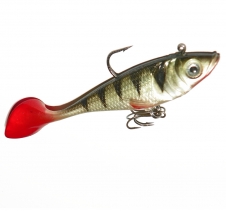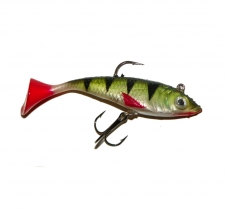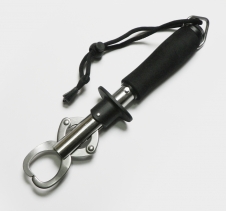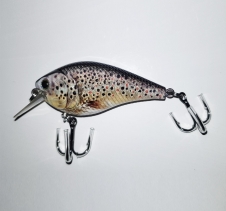Visit Our Online Store! $7 AusPost Parcel Post Delivery FREE Postage for orders $45 and over!
* Shipping rates above apply to Australian Customers only
Choosing the right fishing line for lures.
Comparing the benefits of different fishing lines, such as braided, regular monofilament and fluorocarbon.
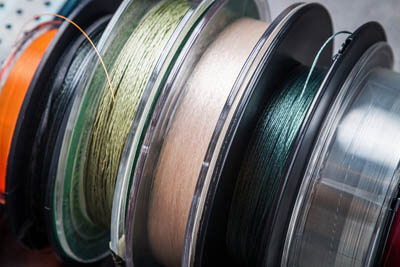 Many lure fishermen, either with experience or as a novice, will come across braided fishing line eventually when shopping for fishing items. Braided line has been around for some time, but has recently gained tremendous popularity in Australia.
Many lure fishermen, either with experience or as a novice, will come across braided fishing line eventually when shopping for fishing items. Braided line has been around for some time, but has recently gained tremendous popularity in Australia.Is the popularity of braided line based on benefits over mono-filament? and are people jumping the gun in changing to braid too early? we will discuss this in our article below.
If you aren't lure fishing using braided line, most people are using either regular mono-filament or fluorocarbon mono-filament. All come in weight classes ranging from about 5lbs to 50lbs (2.26kg to 22.6kg) and each has it's own potential benefits and disadvantages.
The benefits of mono-filament is the regular type is very cheap, at a few dollars per 100 meters. Regular mono has also been proven effective for over 100 years of fishing, has a good relative strength, is semi transparent when in water and floats on the waters surface.
Fluorocarbon mono-filament is about double the price of regular, has been in use for a few decades now, is invisible to the naked eye when in water, has a strength similar to that of regular mono-filament and sinks rather than floating on the surface.
Mono fishing lines are however prone to stretching when under pressure, meaning that if you catch a fish after a decent fight or get hooked on a snag where extended force is used, you will likely need to remove a stretch of line (usually a little over the length of the fishing rod) before your next cast. By replacing this section of line, you prevent an increased risk of the line breaking when you hook up your next fish.
This stretching effect is true in both the regular and fluorocarbon mono. While this isn't always a big issue for most people, braid was designed almost solely in an attempt to put an end to this effect.
Braided line is unfortunately very expensive, at around $30 per 100 meters, however it is not prone to stretching at all. Braid also floats on the waters surface, but there is a downside in the line being clearly visible even when in water, this can be a big disadvantage as the line is very easy to see in both our eyes and that of fish, using only braid is more likely to spook fish from biting should they spot the lure.
To avoid this problem, most anglers will use a braided main line with a fluorocarbon mono-filament leader attached to the end, so that the fishing line is not visible when coming off the front of a lure. The leader is often about 1 to 2 meters, for lures which are shallow diving or surface based, then 1 meter is commonly used, for deeper diving lures or heavy lures (for heavier fish), then 2 meters is often used.
As braided line floats, the idea is to keep most of the visible braid on the surface, while the line which enters under the water stays transparent, hence the mixture of braided main line and fluorocarbon leader. Leader lines should alway be rated a higher weight than the main line, up to double the weight of the main can be used. Keeping a light main line and a heavier leader means you get the added advantage of extra strength at the end to prevent the fish breaking free.
As braid doesn't stretch, it can also increase the feeling of a lures weight to the fishing rod, and this ability not to stretch is said by some to also increase lure response from movements at your fishing rod tip. While the feel is definitely improved, in reality mono-filament does not stretch very far under regular use, so the increase in lure response is likely minimal if at all.
For anyone starting out, I wouldn't recommend starting with braid, as the expense of replacing line should it become entangled is very high, also you will need to be confident with tying a leader to the main line using a very strong knot. If you are planning to combine a leader and main line using a swivel, this is completely pointless when using lures as it will defeat the benefits of the braid in the first place, not to mention make casting a lot more difficult. In the same way, using straight braid alone will likely not work due to it being non transparent.
So, what's the best to start with. If you have no experience tying leaders to main lines using knots, start with only regular mono-filament. After this, if you want to upgrade to tying a leader and main line from a knot, use a mono-filament main line and tie this to a length of fluorocarbon. Once you have success with tieing the leader and it is staying strong and secure after catching fish, then it is definitely time to consider changing to braided line, or at least trying it out should you feel the need.
Many people are very quick to rush into anything considered the best, or even anything that is new and recommended to them, in this case, it's not always the best idea. Upgrading as your skills progress and the need arises is the best way to learn, and learning in this way will also save you a lot of money. Once your skills progress and you are confident catching fish in the current way, then look to upgrade and try the next stage.
If you are just starting out, using braid instead of mono is highly unlikely to increase your catch rate, learning how to use fishing lures correctly and varying the lure retrieves is by far the most important aspect, and this will result in you catching fish.
Braid comes into the equation when you are catching fish, but sometimes you strike to set the hook too early or too late and miss a few hook ups, in these cases where you are entirely accustomed to the feel of a fish biting, compared to the feel of hitting a snag or the drag of a lure passing through underwater foliage, provided you can set the hook on most fish and actually catch them regularly, then you may wish to increase your ability to set the hook faster and get a bit more feeling into the line by upgrading to braid.
In summary, it's best to stick with solely mono-filament line on lures to begin learning, once you are confident catching fish using this and want to potentially increase your catch rate, then you would move to learning how to tie fluorocarbon to your regular mono fishing line, and when you are regularly catching fish on this combination, you can expand the feel provided by your fishing line along with adding more strength (meaning you no longer have to replace a chunk of line after a catch due to the mono-filament stretching) by learning to combine a braided main line with Fluorocarbon mono-filament leader.
Follow us on twitter: @FishTackleLures or Google Plus: +FishingTackleLuresAU
View more articles in our Australian Fishing Guide.
Enter your email address below to be updated on new fishing articles, fishing lures and special offers:
We will only email once every two to four weeks at the most, usually every 2 months.
POPULAR PRODUCTS IN OUR ONLINE STORE


